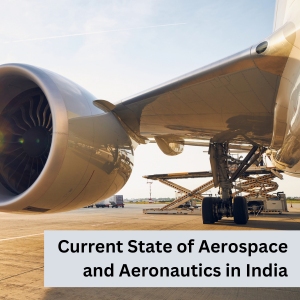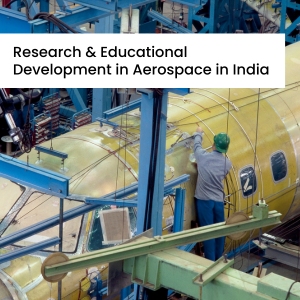Announcement
We are excited to announce the Indus Hackathon 2025, an exhilarating one-day event organized by the CSE Department of Indus University....Read more We are excited to announce the Indus Hackathon 2025, an exhilarating one-day event organized by the CSE Department of Indus University.
26th ISTE Faculty Annual State Convention will be held at Indus University on April 27, 2023....Read more 26th ISTE Faculty Annual State Convention will be held at Indus University on April 27, 2023.
26th ISTE GUJARAT STATE ANNUAL FACULTY CONVENTION & CONFERENCE ON APRIL 27,2023. MORE DETAILS WILL BE SHARED SOON....Read more 26th ISTE GUJARAT STATE ANNUAL FACULTY CONVENTION & CONFERENCE ON APRIL 27,2023. MORE DETAILS WILL BE SHARED SOON.
We are excited to announce the Indus Hackathon 2025, an exhilarating one-day event organized by the CSE Department of Indus University....Read more We are excited to announce the Indus Hackathon 2025, an exhilarating one-day event organized by the CSE Department of Indus University.
26th ISTE Faculty Annual State Convention will be held at Indus University on April 27, 2023....Read more 26th ISTE Faculty Annual State Convention will be held at Indus University on April 27, 2023.
26th ISTE GUJARAT STATE ANNUAL FACULTY CONVENTION & CONFERENCE ON APRIL 27,2023. MORE DETAILS WILL BE SHARED SOON....Read more 26th ISTE GUJARAT STATE ANNUAL FACULTY CONVENTION & CONFERENCE ON APRIL 27,2023. MORE DETAILS WILL BE SHARED SOON.

Aeronautical engineering covers the outcome, design, and management of aerial vehicles like satellites, aircraft, missiles, helicopters, etc. Sir George Cayley, the inventor of the traditional airplane design, used the term "aeronautics" to describe the study of flight. After understanding this, the Wright Brothers created the first airplane and became the first aeronautical engineer in history. Aeronautical engineering studies aircraft that fly within the Earth's boundaries, while Aerospace engineering covers spacecraft that fly within and outside the Earth's atmosphere. Aerospace engineering covers the development and design of spacecraft and airplanes and provides a more comprehensive view of engineering by including a larger number of lesser technical sub-categories. The Indian aerospace industry is at a turning point where it requires innovation to boost its capabilities and position India as a prominent global aerospace player against rising international competition, technical breakthroughs, and changing customer demands.
One of the areas with the highest growth is the aircraft industry in India. By 2020, India is anticipated to have the third-largest aerospace sector. India's aerospace and aviation industry presently displays a combination of successes and difficulties. Indian accomplishments include the launch of satellites and missions to the moon and Mars. Significant contributions come from well-known institutions like ISRO, HAL, and DRDO. However, the industry needs help with low private sector participation, technological shortages, and demanding regulatory requirements. India wants to strengthen R&D, build partnerships, and support entrepreneurs to achieve self-reliance and global competitiveness. The aerospace landscape of the country shows a mix of victories and goals, pointing to a dynamic trajectory with enormous potential for growth and innovation.


The government has embraced several policies to support innovation and domestic technology development, recognizing the Strategic importance of the aerospace sector. The "Make in India" campaign promotes local aeronautics equipment and systems manufacturing. It helps transfer technologies and knowledge exchange by fostering collaboration among companies from India and abroad. Incentives for making manufacturing units or research and development centers are presented under the "Aerospace and Defense Manufacturing Policy," which is also aimed at stimulating innovation. The "National Civil Aviation Policy" boosts regional connectivity and promotes maintenance, repair, and overhaul activities. Partnerships between research institutes, academia, and industry players to devise cutting-edge technology in aeronautics are stimulated by the "SST&I Policy." Indian collaborations with international aerospace organizations have contributed to various sectors like space exploration, satellite development, aircraft manufacturing, and research.
ISRO has joined with influential global players, like NASA, ESA, etc., on numerous missions, sharing technology, data, and expertise. Missions like the Chandrayaan and Mangalyaan have showcased India's capabilities in global space exploration. Hindustan Aeronautics Limited has partnered with Airbus and Boeing for aircraft manufacturing. Integrated research efforts of Indian universities, research institutions, and foreign counterparts have directed significant breakthroughs in materials science, propulsion systems, avionics, etc. Lastly, the Indo-French joint venture "AgniKul Cosmos" aims to create launch vehicles for small satellites. These collaborations facilitate the exchange and better utilization of expertise, views, and resources, driving the growth of the global aerospace and aeronautics industry.
Aerospace research has extended to propulsion systems, aerodynamics, advanced materials, and space exploration. Organizations like ISRO and the Defense Research and Development Organization have led to breakthroughs in satellite technology with the help of research centers and laboratories devoted to aerospace research, encouraging innovation. The educational system in India has also adapted to the changing trends of the aerospace industry by covering theoretical and practical knowledge required for aerospace innovation. Similarly, skill development, like workshops and training programs, is regularly organized to bridge the gap between academics and industry application, preparing students for the challenges and demands of the aerospace industry. These actions are required to build a skilled workforce to drive innovation in the aerospace industry. In conclusion, India's aerospace research and educational scenario have evolved considerably, driven by a commitment to innovation and technological advancement.


Innovations in aerospace and aeronautics often require a delicate equilibrium between progress and safety. Stricter security protocols become critical, given the potential consequences of failures in these sectors and ethical considerations about environmental impact and privacy in technologies like drones require cautiousness. To ensure that innovation does not come at the cost of safety and ethical responsibilities, incorporating safety qualities, conducting rigorous testing, and fostering open discussions on ethical implications are essential.
The future of Indian aerospace and aeronautics has promising opportunities. The development of reusable launch vehicles and advancements in satellite technology offer considerable growth potential. At the same time, the rise of electric and hybrid propulsion systems paves the way for sustainable aviation practices. Public and private sectors are promoting a robust ecosystem for aerospace startups, and research initiatives through investments in research and development will drive breakthroughs in materials science, supersonic travel, and AI-driven aviation systems. India's talent and cost-competitive manufacturing capacities position it admiringly for global partnerships and joint ventures.
Hence, addressing challenges while fostering innovation with safety and ethical standards is necessary for the growth of the Indian aerospace and aeronautical sector and advancements in space exploration, sustainable aviation, and collaborative actions, positioning India at the forefront of aerospace innovation.
The dynamic field of aerospace and aeronautics is built on innovation, which can reshape the entire sector's course. Innovation becomes the critical factor in turning abstract ideas into realities as technology advances at an unparalleled rate. Innovative manufacturing techniques, ground-breaking propulsion systems, and cutting-edge materials arise due to innovation, challenging established practices and ushering in a new era of potential. The Indian aerospace and aeronautics industry promises further expansion and outstanding achievements. Government agencies, research organizations, commercial businesses, and educational institutions are working to help the sector reach greater heights. Combining various skills, talents, and resources will open the door for ground-breaking discoveries previously thought unattainable.

The industry is prepared to solve environmental issues while pursuing technical improvements thanks to a firm focus on sustainable practices. The dedication to a greener and more responsible aeronautical sector is embodied in integrating renewable energy sources, aerodynamics optimization, and creating eco-friendly propulsion systems. The challenges ahead will serve as inspirations rather than obstacles as India establishes itself as a global center for aerospace innovation. Innovative solutions will negotiate legal frameworks, safety problems, and ethical dilemmas, demonstrating the industry's resiliency and adaptability. India has been successful in its undertakings, as seen by successes like the Chandrayaan and Mangalyaan missions, highlighting its capacity to overcome challenges and steer it in the right direction.
The aerospace and aeronautical sectors have been continuously pushing through the limits of aviation and space exploration to facilitate notable socioeconomic growth and scientific advancements. Through continuous innovation, this industry has paved the way for developing cutting-edge technologies and transformed air and space travel, opening untried opportunities for scientific research, space exploration, and commercial applications, leading to numerous societal benefits. It is truly remarkable to see how the aerospace industry has evolved over the years, and we can only wish for more exciting developments in the future.
